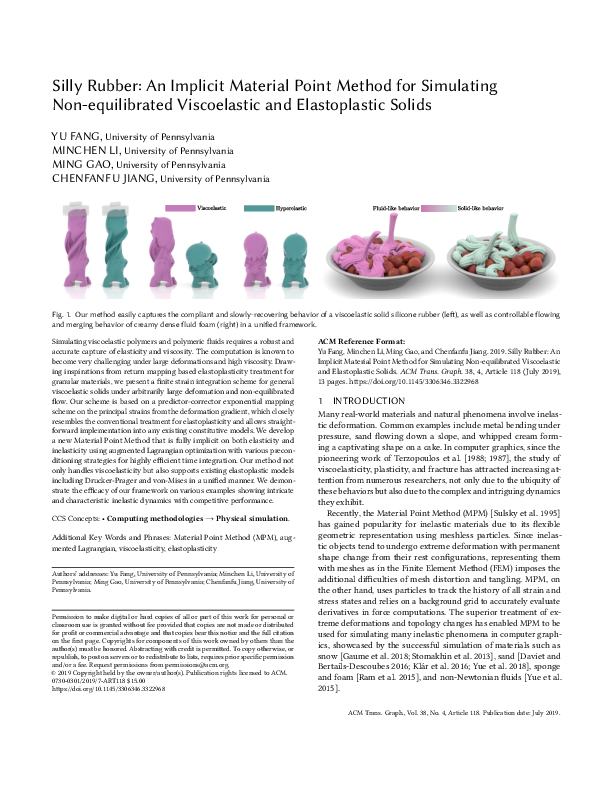

To make it compile, I removed the -Werror=all . In Lib/MPM/MpmSimulationBase.cpp, I replaced all lines "if constexpr (!USE_APIC_BLEND_RPIC)" with "if (!USE_APIC_BLEND_RPIC)"; "if constexpr (USE_APIC_BLEND_RPIC)" with "if (USE_APIC_BLEND_RPIC)"; "if constexpr (!USE_MPM_DEGREE_ONE)" with "if (!USE_MPM_DEGREE_ONE)".
The code corresponds to two siggraph 2019 papers. It is not explicit which code corresponds to which paper, I assumed "admm" project corresponds to this paper, while "fracture" corresponds to "CD-MPM: Continuum Damage Material Point Methods for Dynamic Fracture Animation". I could reproduce the twisted bar and car crash experiments. I visualized the bgeo files with the partview tool available here: "https://github.com/wdas/partio", it can also be done using Houdini. To know which test number corresponds to which experiment, refer to the AdmmInit3D.h file.
The code compules out of the box
The code corresponds to two siggraph 2019 papers. It is not explicit which code corresponds to which paper, I assumed "admm" project corresponds to this paper, while "fracture" corresponds to "CD-MPM: Continuum Damage Material Point Methods for Dynamic Fracture Animation". I could reproduce the twisted bar and car crash experiments. I visualized the bgeo files with the partview tool available here: "https://github.com/wdas/partio", it can also be done using Houdini. To know which test number corresponds to which experiment, refer to the AdmmInit3D.h file.
If you want to contribute with another review, please follow these instructions.
Please consider to cut/paste/edit the raw JSON data attached to this paper.